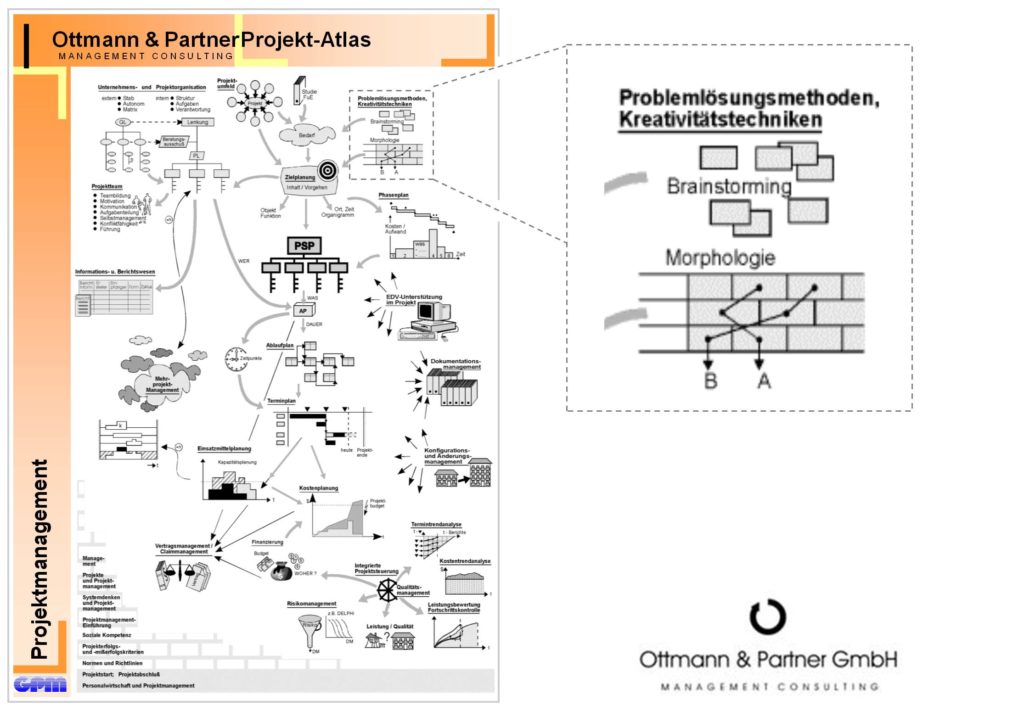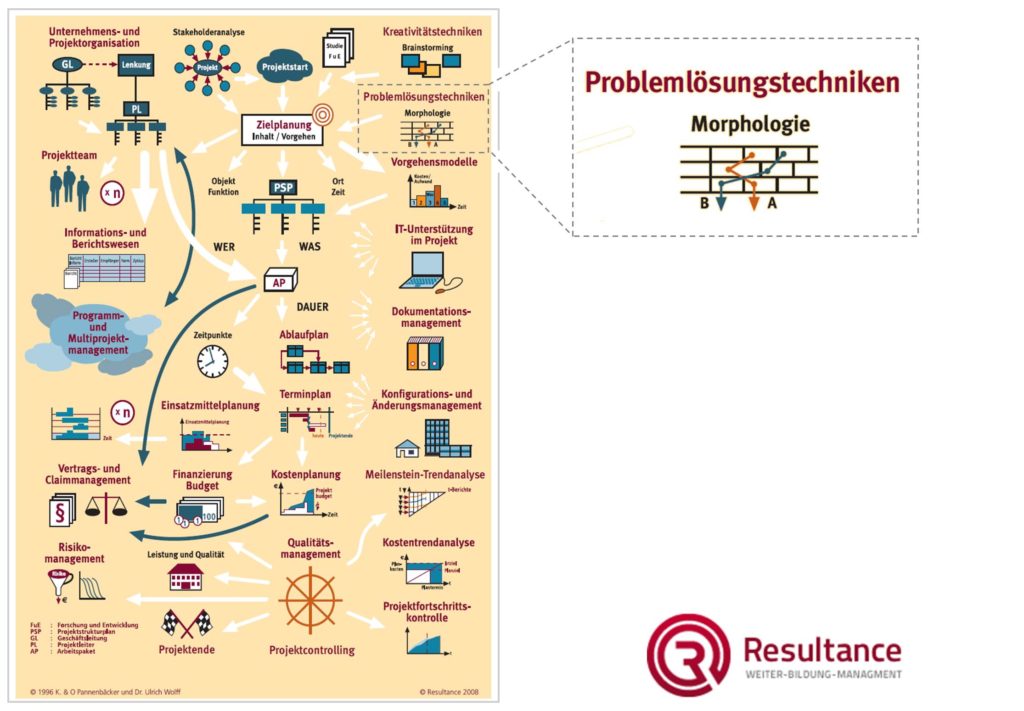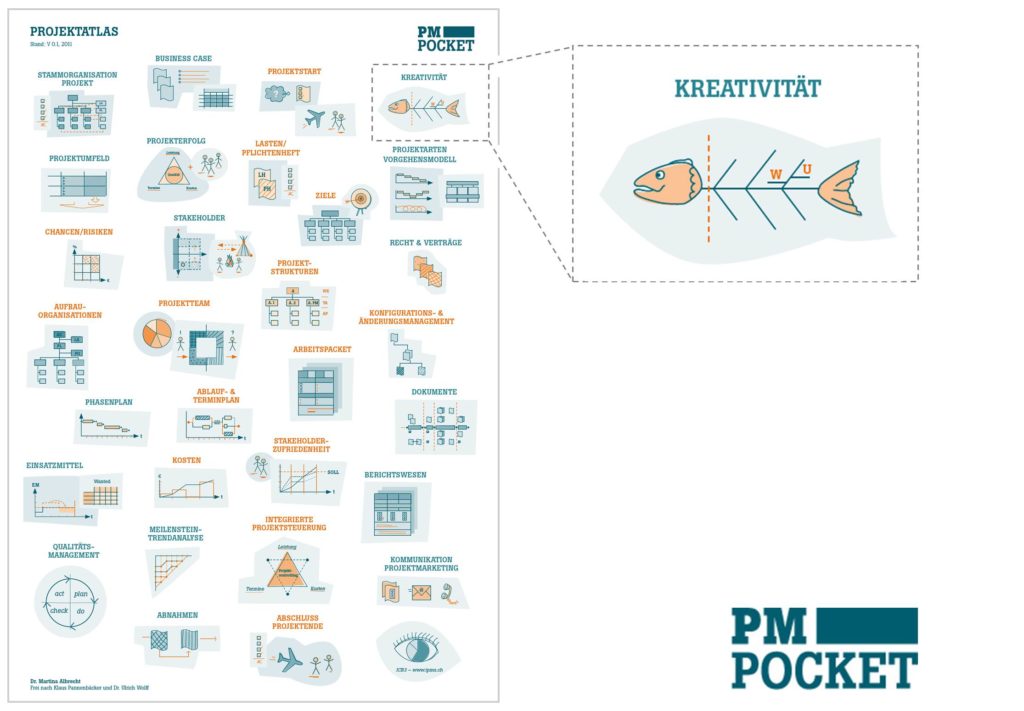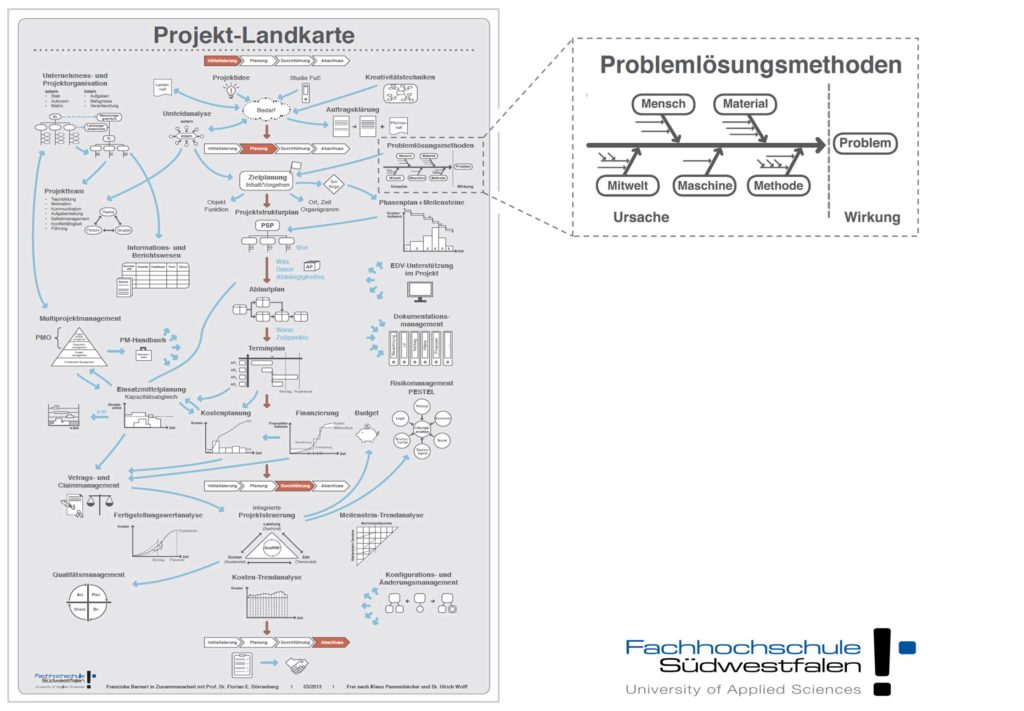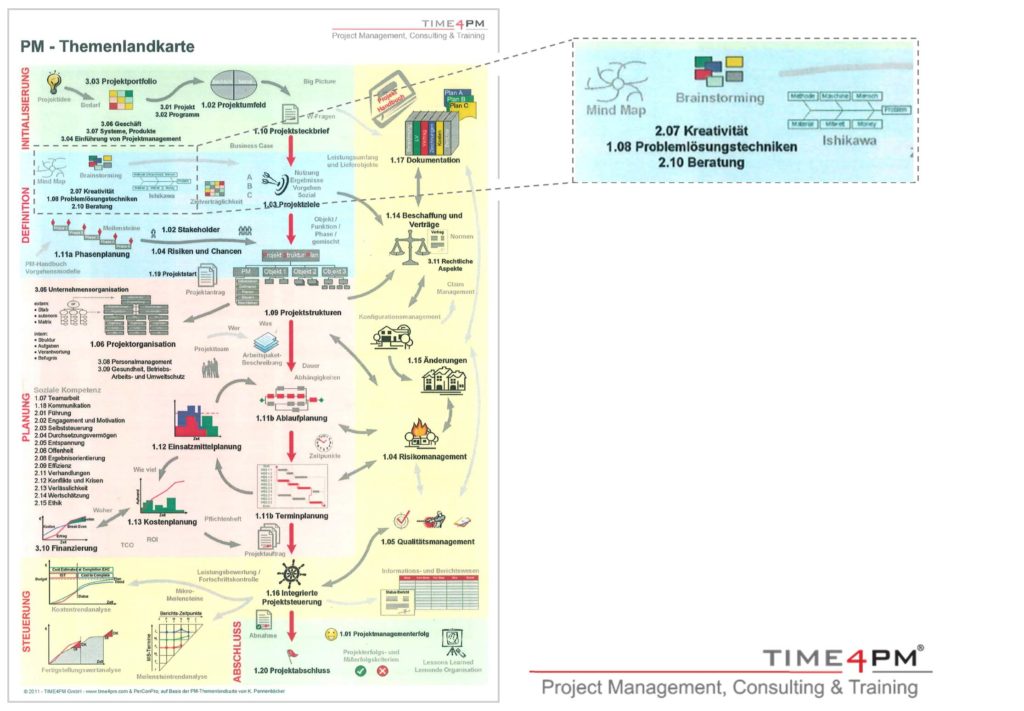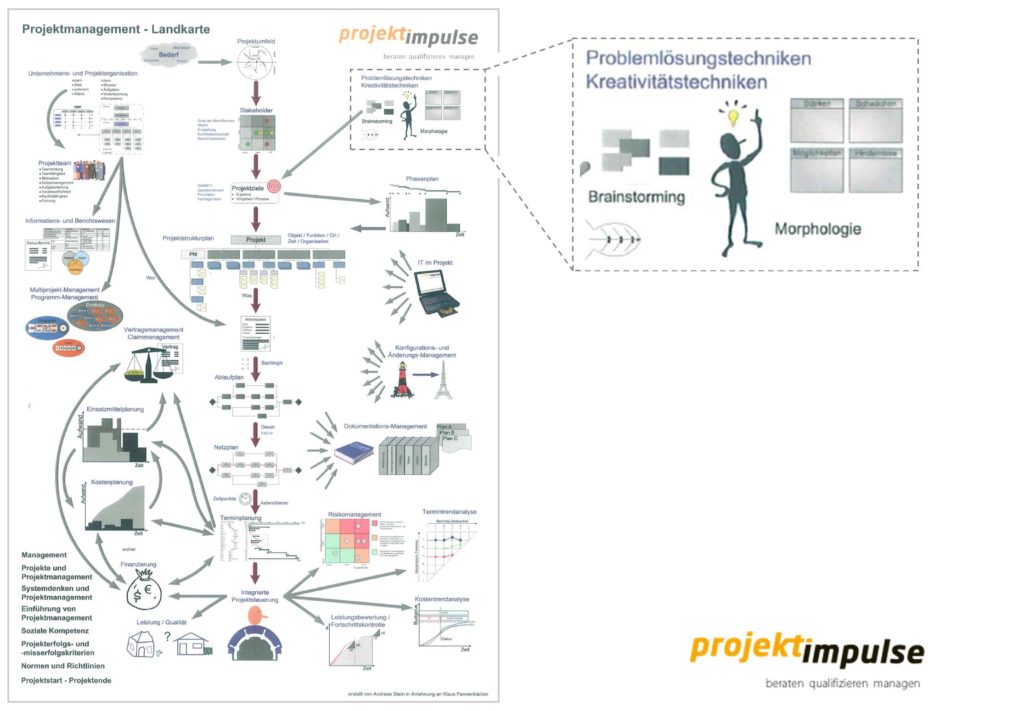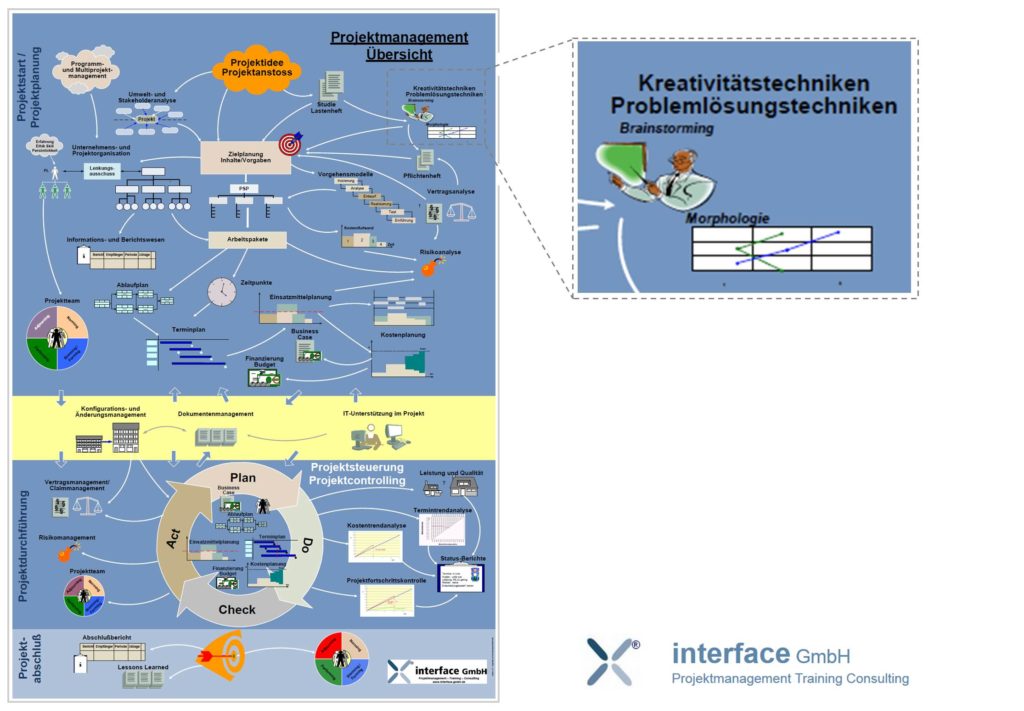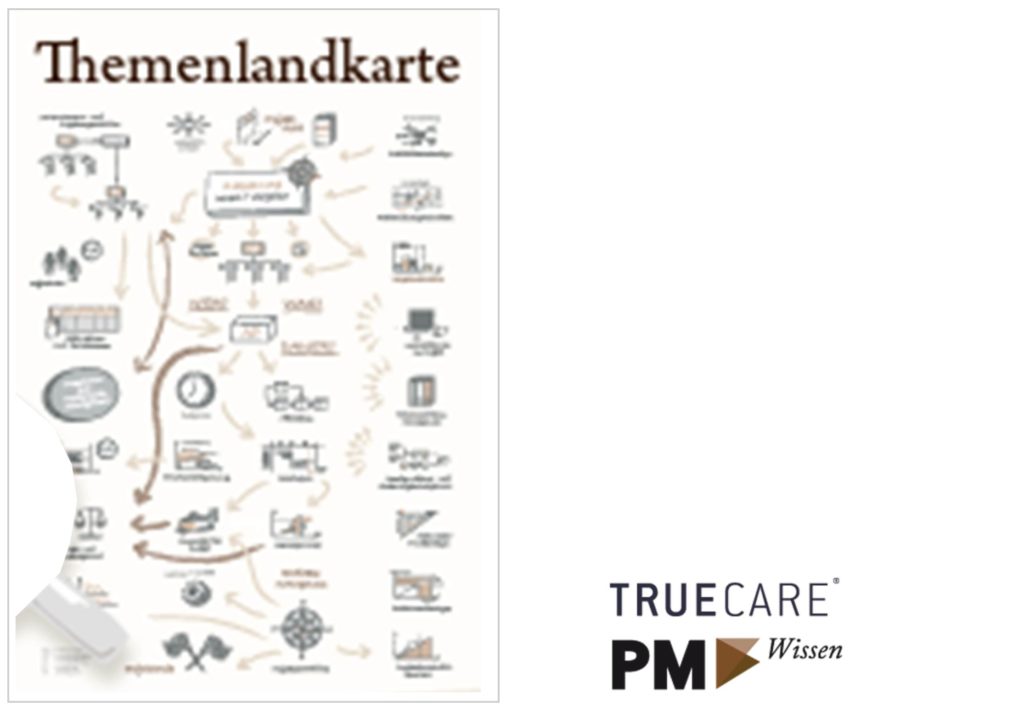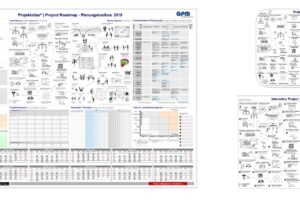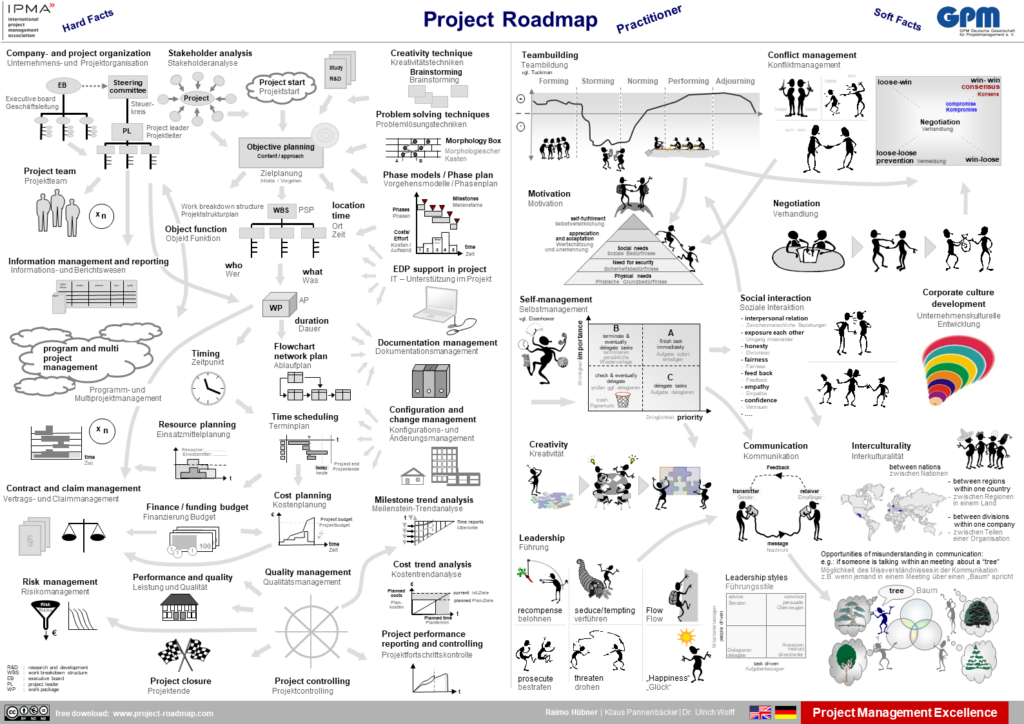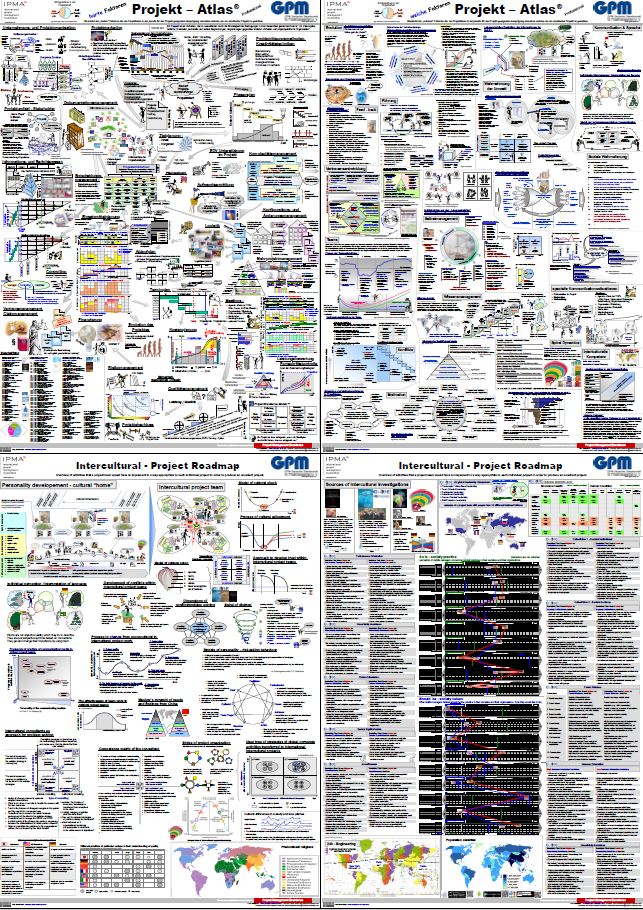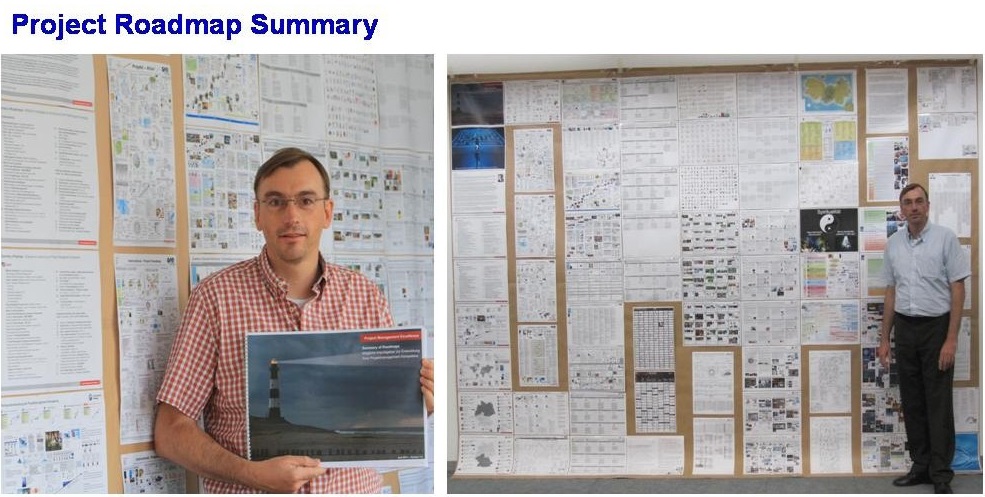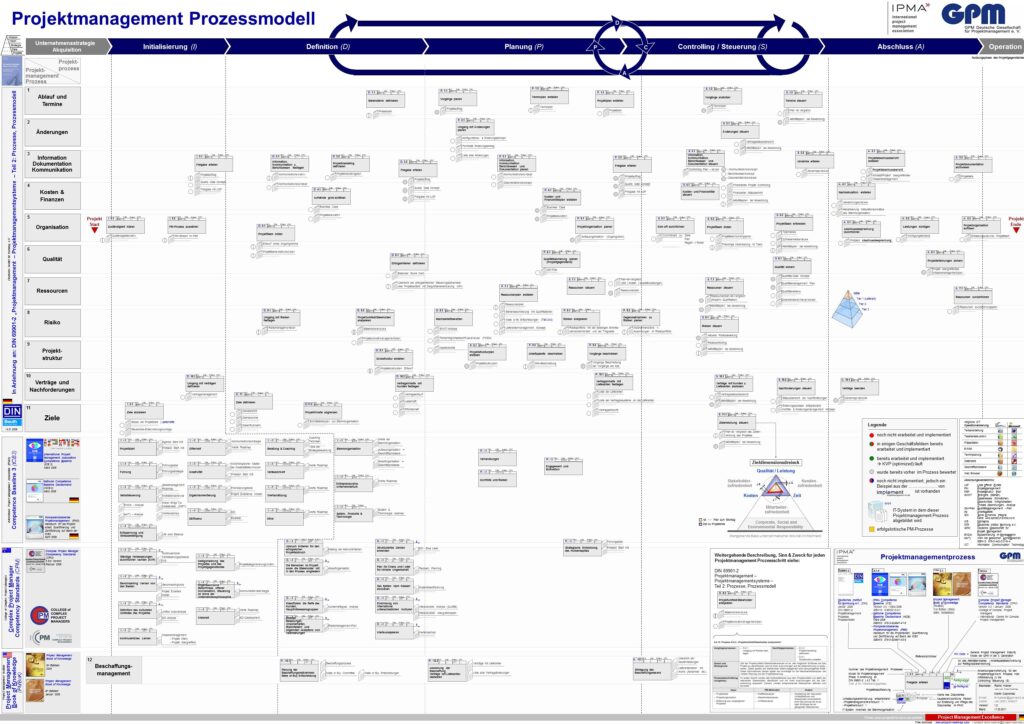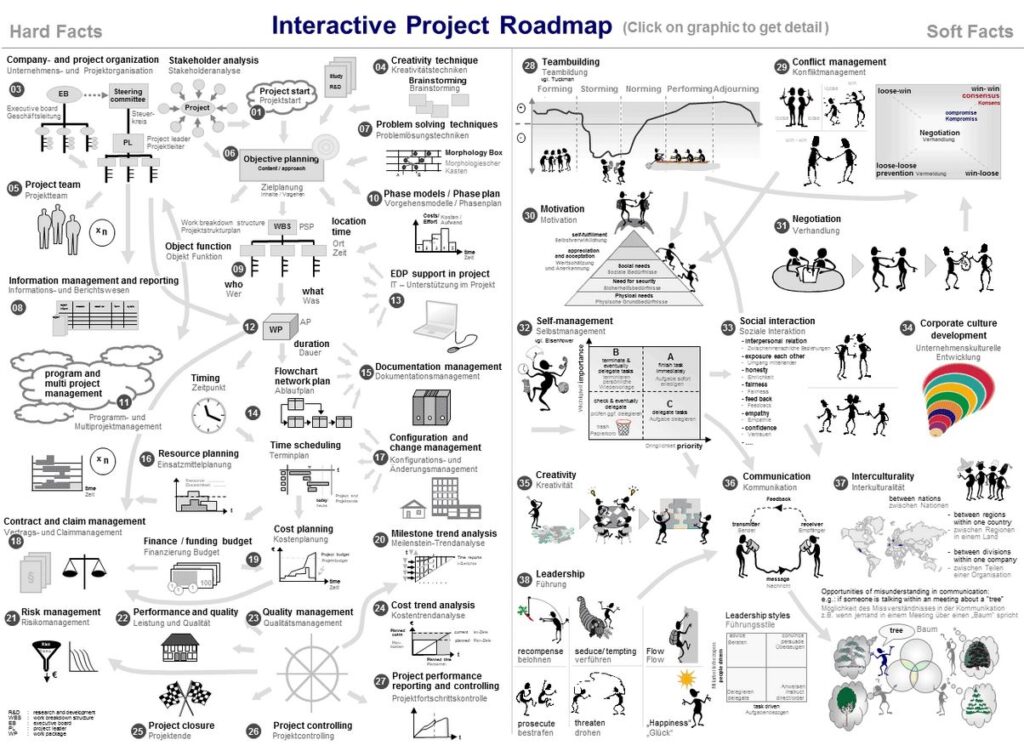Projekt-Atlas History
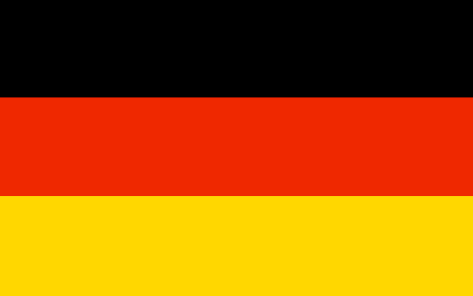
Wie ist der Projektatlas entstanden?
Wie kann der Projektatlas meine Projektarbeit unterstützen?
Warum lohnt sich zu erfahren, wie der Projektatlas entstanden ist?

What is the Project Roadmap History?
How the Project-Roadmap can support my projects?
How it is helpful to understand: why project roadmap has been created?
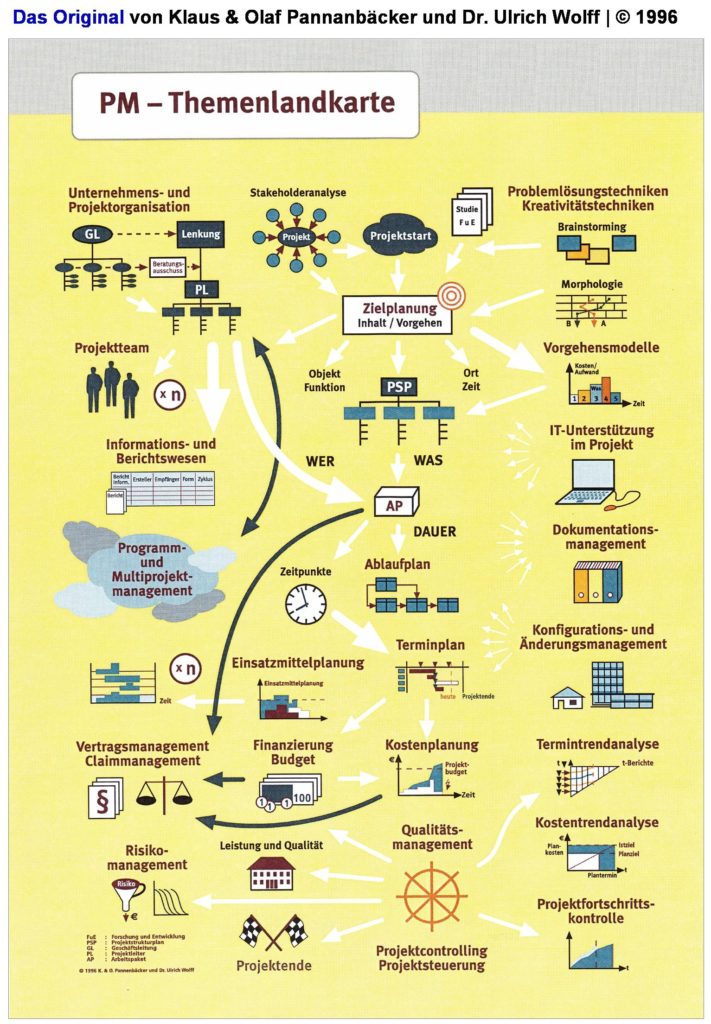
Oder sie schauen sich den Film auf Youtube an.

Bei der Suche nach geeigneten Tools und Literatur zur Optimierung der eigenen Projektarbeit wird der Suchende durch die Vielfalt der Angebote im Internet und auf dem Buchmarkt überfordert und regelrecht informell überflutet.
So liefert z.B. eine Suchabfrage auf www.amazon.de bei dem Suchwort „Projektmanagement“ 30.000 Suchergebnisse und von „Project Management“ auf www.amazon.com auch mehr als 100.000 Suchergebnisse.
Dieses Vorgehen führt also nicht zu einer professionellen Unterstützung der eigenen Projektarbeit. Geht man jetzt eine Ebene höher und fragt: „Welche Nation hat bisher aus eigener Kraft eine eigene Projektmanagement Richtlinie oder einen eigenen Projektmanagement Standard erarbeitet?“, wird die Welt wieder überschaubar.

If you look to helpful literature to optimize your project work you will be overstrained on global book market.
So you will get on www.amazon.de if you search for „Projektmanagement“ 13.261 results and for „Project Management“ at www.amazon.com 19.118 results (stage 09.01.2011). To go this way will not lead to very helpful support for your projects. If you go one level higher and ask ”which nations already had the power and energy to develop and create an own project management guideline or standard?” the world will be an little bit smaller.
Than you only have „Germany“: Austria, Great Britain, USA, Australia, Japan and the IPMA International Project Management Association .
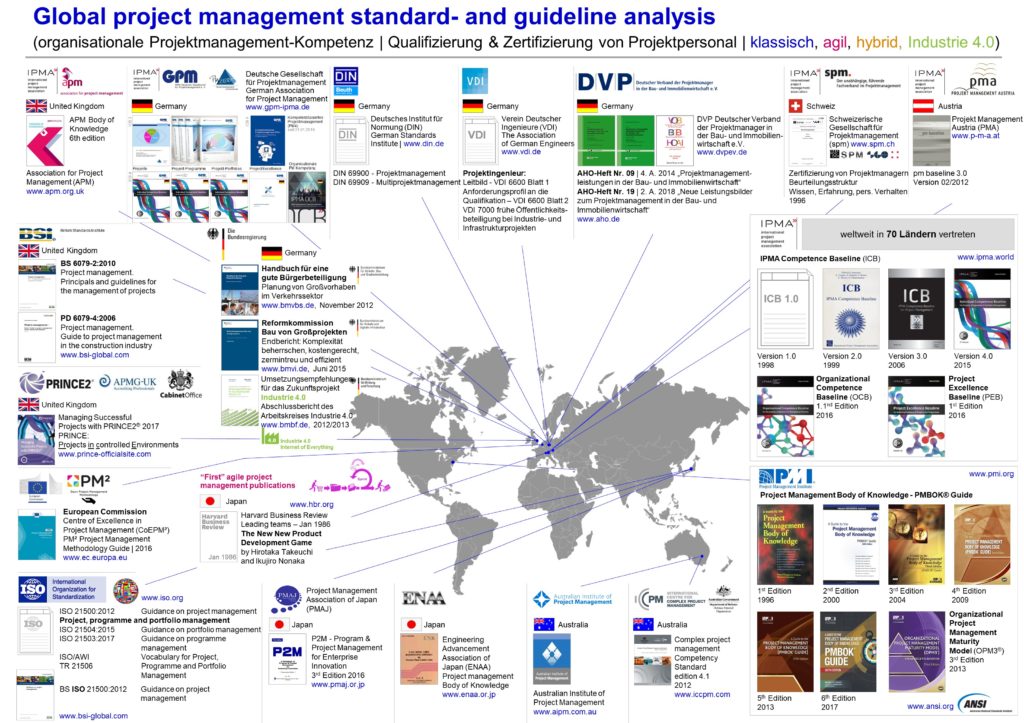

Dann bleiben nur noch Deutschland, Österreich, Großbritannien, USA, Australien, Japan und die „International Project Management Association (IPMA)“ übrig. Betrachtet man jetzt noch die globale Durchdringung der Standards und Guidelines, so sind die IPMA Competence Baseline V4.0 mit der für Deutschland angepassten Version PM4 , der PMBOK Guide und Projects in controlled environments-PRINCE2 am weitest verbreiteten Publikationen zu Methoden und Tools im Projektmanagement. Alle anderen Nationen nutzen größtenteils Übersetzungen und Lokalisierungen (National Competence Baselines) der ICB 4.0 des PMBOK oder von PRINCE2 als Basis ihrer Projektarbeit.
Sehr viele weitere Publikationen beschäftigen sich dann spezifisch nur mit ausgewählten Methoden und Tools im Projektmanagement oder deren Reifegradentwicklung.
Wenn der interessierte Projektleiter oder Projektmanager jetzt einige dieser Bücher kauft ist er wiederum sehr schnell mit einer Mächtigkeit von mehreren tausend Seiten im der Grundlagen- oder Vertiefungswissen fast schon wieder erschlagen.
Irgendwann in meiner Entwicklung als Projektmanager ist mir das auch so gegangen, dass ich fast den Überblick verloren hatte. Dann habe ich begonnen in einer tabellarischen Übersicht die wesentlichen weltweiten Standards und Guidelines im Projektmanagement mit ihrem Inhaltsverzeichnis, und wo ich konnte in ihrer historischen Versionsentwicklung, aufzulisten und vergleichbar zu machen.

If you look than on the next step „ What kind of Standards and Guidelines will be used by project managers worldwide?“, so you will find IPMA Competence Baseline V3.0 with the for Germany customized version PM3 , the PMBOK Guide and Projects in controlled environments-PRINCE2) as the most used publications to methods and tools in project management. All other nations use translations and customized local versions (National Competence Baselines) of ICB ,PMBOK or PRINCE2 as an basis of their project work. Most of the other “project management publications” are focused on special areas of project management ore maturity development of project management competence.
If you as an project manager by some of this project management standards and guidelines and you will start your studies, you will be overstrained again by the huge amount of pages in this books. With the few thousand pages of basic and special project management knowledge you will be stressed fast.
Years ago in my life I had the same situation. I felled lost in such a huge amount of information. Than I have started a comparison overview (sometimes with the historic development) of the content of the most important global project management standards and guidelines in a table.
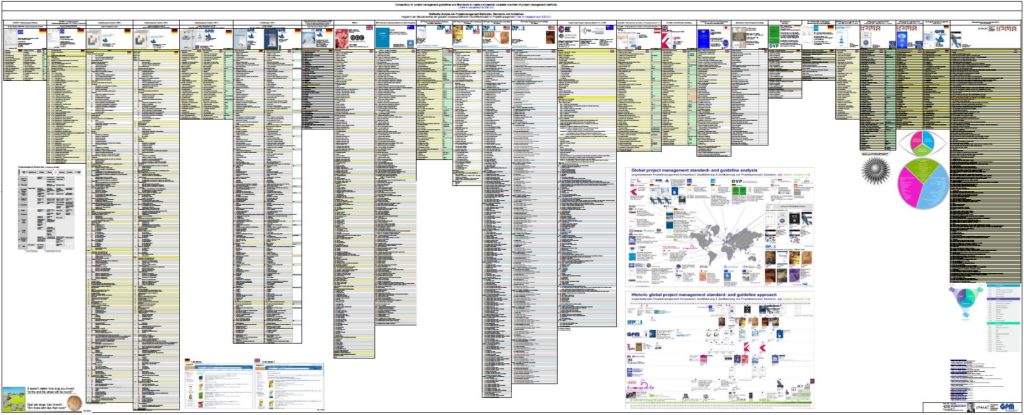

Dann musste ich feststellen, dass bis auf wenige, auch immer wieder in der Projektmanagement Fachwelt diskutierten, inhaltlichen, strukturellen und bezeichnungstechnischen Unterschiede ein sehr großer Überschneidungsbereich erkennbar ist. Etwas anderes wäre ja auch nicht zu erwarten gewesen, denn alle Projekte agieren unter den gleichen Rahmenbedingungen in der Biosphäre dieser Erde und somit müssen auch die Methoden und Tools, welche zu tendenziell mehr Erfolg in der Projektarbeit führen annähernd gleich sein. (Egal wie lange man forscht, am Ende wird das Rad rund!)
Geht man jetzt den nächsten Schritt und Vergleicht alle Methoden und Tools im Projektmanagement in den globalen Projektmanagement Standards und Guidelines und erarbeitet eine vermutlich vollständige Liste und gestaltet dann zu jeder Zeile dieser Liste ein kleines prägnantes Bild oder Icon zur Erklärung, so kommt man zur Übersicht des Projekt–Atlas.
Eine solche bildhafte Übersicht ist erstmals von Klaus Pannenbäcker mit seinem Sohn und Dr. Ulrich Wolff entwickelt und im Projektmanagement Fachmann veröffentlicht und von mir in den letzten Jahren mit interessierten Projektmanagern weiterentwickelt worden.

Than I found out that there was until a few content, structural or relationship gaps a huge overlapping. Something else has not been to be expected. All project managers are living at the same biosphere on this planet. In consequence the same methods and tools will lead to more success in projects must be nearly the same (It does not matter how long you invent – at the end the wheel will be round!).
At the next step and you create a “complete” list of project management tools and methods and draw a small picture or icon to each line you will come to the overview called Project Roadmap. Such kind of overview first time has been created by Klaus Pannenbäcker , his son and Dr. Ulrich Wolff . This „PM-Themenlandkarte“ first has been published in Projektmanagement Fachmann .During the last few years I could develop further this idea with engaged project managers.
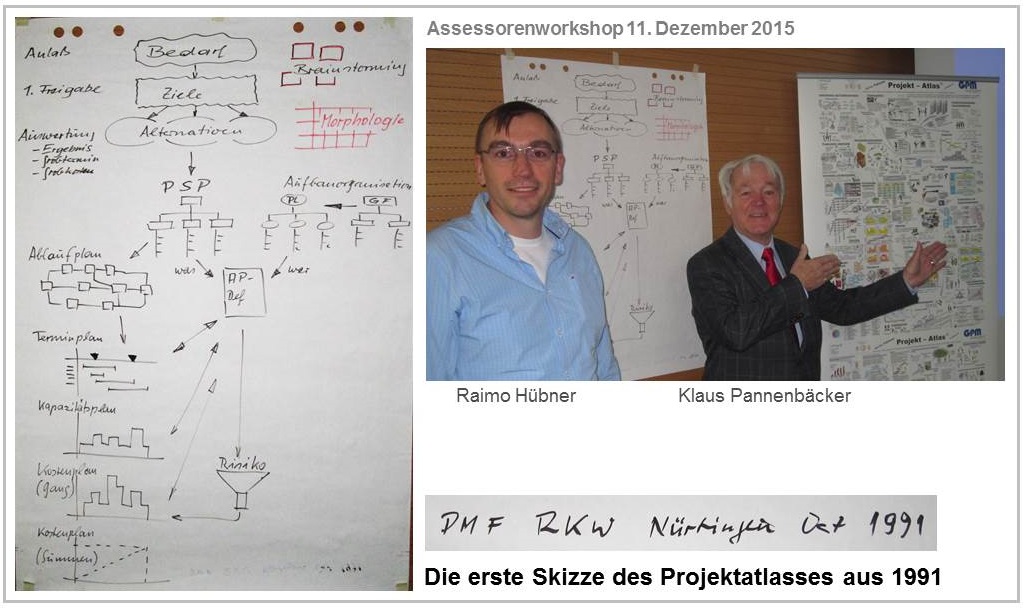

Vielen Dank an Klaus Pannenbäcker, der sogar die erste Skizze des Projektatlasses als Flip Chart von vor 25 Jahren aus dem Jahre 1991 noch erhalten hat und Ihnen hier die Möglichkeit gibt, die Entwicklung von der Geburt des Projektatlasses bis zum heutigen Stand mitzuerleben.

Many thanks to Klaus Pannenbäcker, who conserved the first sketch of the project atlas as a flip chart from 1991, 25 years ago, and gives you the opportunity to experience the development of the project atlas from the birth to the current state.
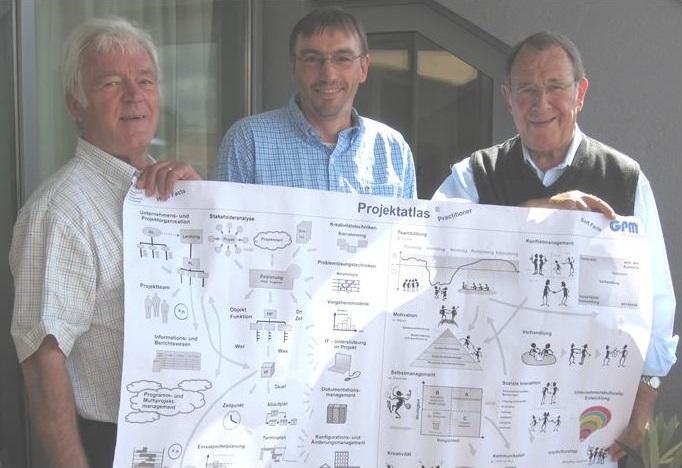

Dr. Ing. Ulrich Wolff, langjähriges GPM Ehrenmitglied, ist am 14. Mai 2015 verstorben. Dr. Wolff hat als Vorstandsvorsitzender, einer der ersten Assessoren in der Personenzertifizierung und als einer der Mitentwickler des Projektatlas entscheidend das Bild des Projektmanagements in der Deutschen Projektwirtschaft geprägt. Wir trauern um einen wertvollen Partner und Kollegen in der Projektarbeit und Zertifizierung.

Dr. Ing. Ulrich Wolff, a long-standing GPM honorary member, passed away on 14th May 2015. Dr. Wolff was for a long time active as an GPM board chairperson, one of the first assessors for project management personnel and as one of the developer of the project roadmap he created great contribution to project management within the German Project Management Economy. We mourn for a valuable partner and colleague in the project work and project management certification. He gave us an important support to Project Roadmap History.
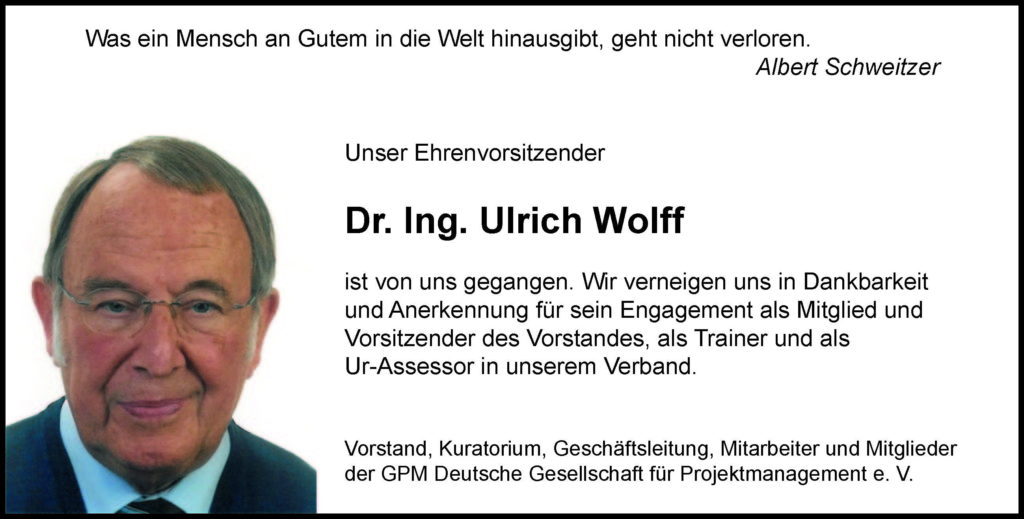
Weitere Visualisierungsvarianten des Projektatlasses
further variants of visualization
